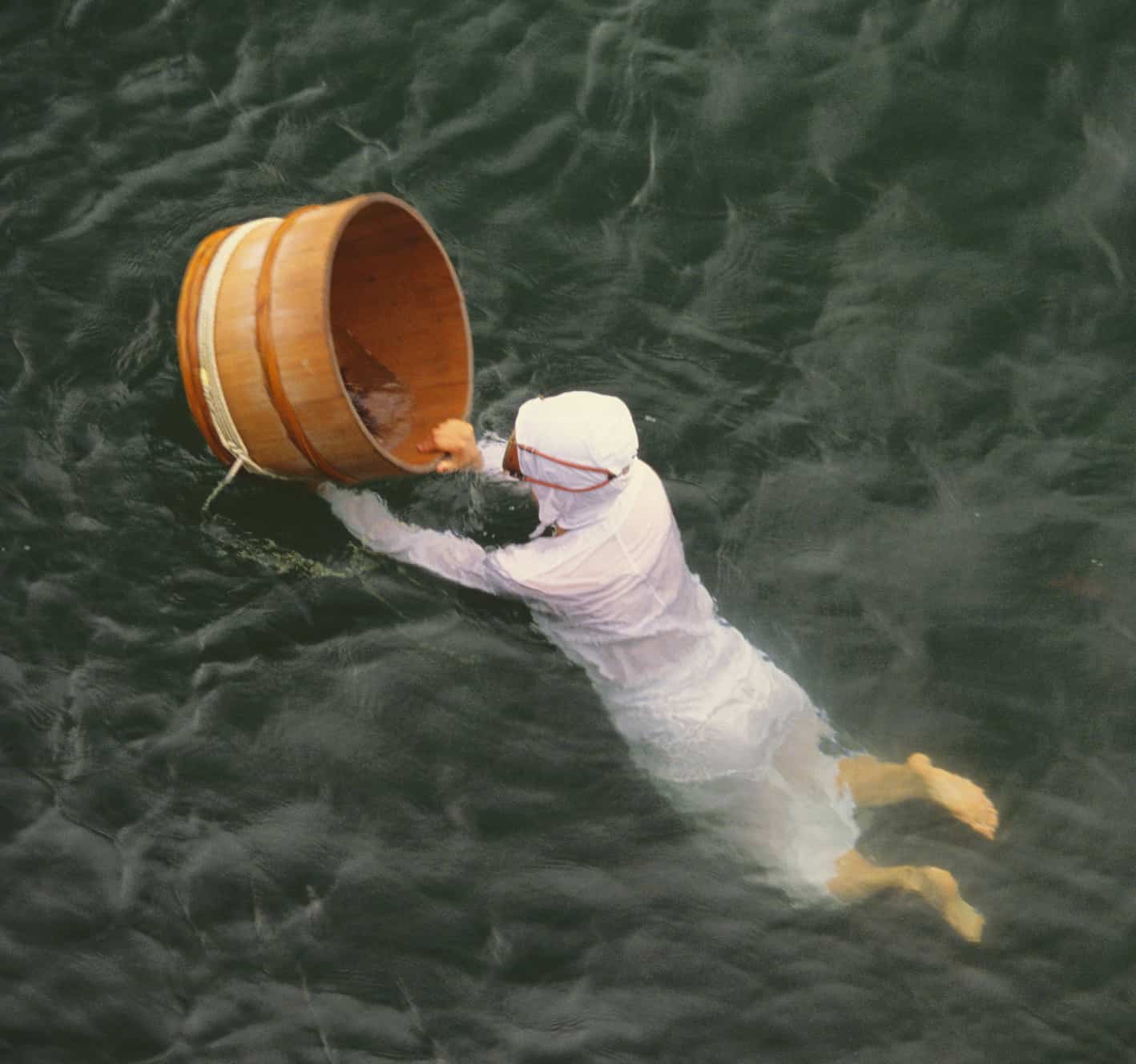Did you know that there are real-life “mermaids” in Japan who happen to be highly trained, deep sea shellfish hunters?
While they don’t have the tails of a fish, the legendary ama divers of Toba, Japan in Central Japan — just a few hours from Nagoya, Osaka, or Kyoto — still carry on the traditions of their centuries-old profession. Almost every morning, they plunge into the ocean for hours to collect sea cucumbers, turban shells, seaweed and abalone.
According to legend, ama were “sea faring gypsies of the Asian seas.” And it wasn’t until after World War II that Westerners first witnessed the hardworking women, notably dressed in mere loin cloths, diving masks and bandanas to protect their heads. Today, they wear rubber wetsuits, and dive lithely from boats manned by their husbands, selling their catch at local seafood markets.
Because of the many years of training required for the craft, most expert divers are at least 40 years-old, (though many continue diving well into their 70’s) and have extraordinary lung capacities that can hold up to two minutes-worth of air.
Only around 2,000 ama still dive across Japan, with 800 of them clustered in Ise-Shima, the coastal region around Toba.
Luckily, the divers’ cultural legacy is in no danger of being lost to time thanks to the pearl business of entrepreneur Kokichi Mikimoto. When he started his business in the Toba area in 1893, Mikimoto relied on the ama divers’ expertise and skill to develop the first method of pearl production ever invented worldwide. Now, ama divers are vital to Mikimoto’s pearl cultivation process which still occurs at Mikimoto Pearl Island, directly off the coast of Toba in Ise Bay. Here, ama collect oysters from the seabed so that a pearl nucleus can be implanted inside them. Then, the divers must carefully position the seeded oysters back on ocean floor so that they’ll be protected from the tides and typhoons.
Today, Mikimoto Pearl Island is a required itinerary stop for visitors interested in seeing the ama in action. While the museum there offers an education on the pearl industry, the white-suited ama offer pearl diving demonstrations daily in the surrounding waters.
Another way to check out the traditional divers is with a lunch stop at Hachiman-Kamado Ama Goya in Toba, a rustic eatery located inside an authentic goya hut (the traditional wood structures where ama gather after diving to warm up and have a bite to eat). Ama women prepare and serve fresh seafood and share stories of their culture and history.
Travelers eager for even more ama immersion can visit the Toba Sea-Folk Museum, or attend the Shirongo Matsuri Ama Festival each July which honors and celebrates the guardian deity of Toba, with ama divers competing to catch abalone.
No matter what your itinerary, though, if you ever find yourself in Toba, listen for a high-pitched whistling sound, almost like the call of a dolphin. This is the sound of an isobue, or “ocean whistle,” that an ama diver makes to reset her breathing — she has just come up for air, and is ready to dive back in again.
Where to visit the ama divers in Japan:
- Mikimoto Pearl Island and Museum
- 1 Chome-7-1 Toba city, Mie prefecture
- Hachiman-Kamado Ama Goya
- 819 Osatsucho, Toba, Mie Prefecture
- Toba Sea-Folk Museum
- 1731-68 Daikichi, Uramuracho, Toba, Mie Prefecture
- Shirongo Matsuri Ama Festival
- Shirongo beach, Sugashima-cho, Toba, Mie Prefecture

